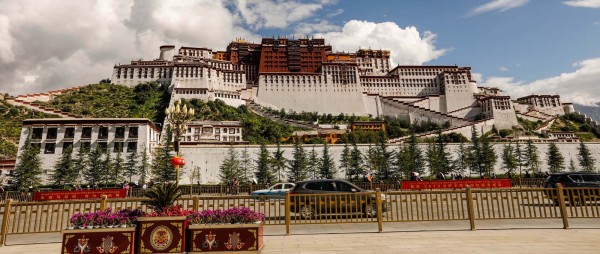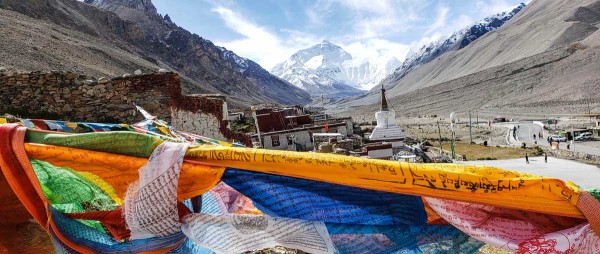Important Information
Region
Tibet Tours
Duration
19 Days
Max Altitude 5660m
Best Season April - October
Activity Per Day
5-6 hrs
Grade
Level 3
Group Size
2 - 12 people
Transportation Flight - Jeep
Mount Kailash (6,638m) is a holy pilgrimage site for mainly four religions; Hinduism, Buddhism, Bon, and Jainism. The name Kailash is meaning to Crystal (Kelasa). Tibetan Buddhism is known for Gang or Kang Rinpoche, it significance a precious mountain. Every year thousands of pilgrims and tourists visit this crystal peak. Those who had already done Kailash trek through Himalayan Wander Walkers had a gratifying trip. In this trip you will visit both the holy lake of Manasarovar and Rakshastal, lies close to the source of Asia’s longest rivers like Indus, Sutlej, Brahmaputra, and Karnali.
In 1935 Mr. Herbert Tichy, an Austrian geologist visited Kailash with the Indian group, he asked one of the Garpons(local leaders) of Ngari whether Kailash was climbable? And the Garpon answered that only a man entirely free of sin could climb Kailash. So, Kailash is a virgin peak till now and no one is allowed to climb it.
Route of Kailash via simikot|
Simikot is the only well-known center of the Humla district of Nepal. The trek starts from Simikot bazaar following the Karnali River to its source in Tibetan Plateau near the Manasarovar Lake. The trek passes through an unspoiled culture of western remote villages like Dharapori, Ship Ship, Hilsa, and Taklakot with a full camping trip. Thereafter, the route connects to Kailash by driving on the high Tibetan plateau, one of the best experiences you will earn of this trip. Then you will do the Kailash Trek (Kora) for three days and finally return to Kathmandu via Gyikong (Kerung) border. The entire tour will definitely create a unique and rewarding experience in your life.
Highlights of Tour
- Discover the cultural diverse; Nepal and Tibet
- Experience the journey through the ancient salt route
- Gain blessing from the holy crystal Mountain
- Feel the spiritual journey of Kailash
- Lifetime experience of the sacred site
- Travel without hassle and worries
Note: If the given itinerary does not meet your timeframe or trekking tour route then please customizes your Tibet tour, we are happy to make it to your preferences.
Include
Airport Pick up drops 3 times by private coach/van
One full day Kathmandu sightseeing (Pashupati, Boudha, Kathmandu Darbar square and Swayambhu)
Nepalgunj airport transfers
Kathmandu Hotel 3 Nights
Nepalgunj hotel for one night with full board meal
Kathmandu Nepalgunj flight
Nepalgunj to Simikot flight
Nepali Guide airfare to Simikot from Kathmandu
Cook land transfer to Nepalgunj - flight to Simkot (one day before)
Cargo
Needed Mules & 3 kitchen staffs from Simikot
Meals from own camping kitchen by trekking cook during Nepal part (Breakfast, lunch, and Dinner with tea/coffee/hot water),
Tent, mattress, table, Chairs and cooking utensils during camping trek
Humla special permit
Humla community fees
Chinese visa fee with Nepal Guide
Camping charge made by local (community)
One bus pick up from Kyirung border
Guide/Cook salary/insurance,
Sleep at local Guesthouse/hotel with their food in Tibet part).
Rain protection duffel bag for luggage
Hilsa border crossing (local community) fee
Accommodation as mentioned in the program
All necessary Tibet entry and road permits
1 Local Tibetan English speaking guide,
Conditional Transportation (one van) in Tibet
All entry fees to the sites and monasteries in Tibet
Porters around Kailash trek
Different kinds of snacks like biscuits, dried fruit, toast, coffee, tea, etc for the Breakfast for the entire tour in Tibet as well as Lunch and Dinner in available hotel/restaurant
Kailash and Mansarovar conservation fee
Kailash and Mansarovar conservative bus fee
National grassland conservation fee
Oxygen in case needed during in Tibet
First Aid kit (suggest to have own better)
All staffs salary/insurance/food/accommodation
Farewell dinner in Kathmandu at the end of the trip
Duffle bag for luggage
Exclude
International airfare
Nepal visa
Helicopter charter to Simikot from Nepalgunj on flight cancelation due to bad weather
Extra nights Hotel in Nepalgunj on flight cancelation due to bad weather
Alcoholic beverages, soft drinks bottle of mineral water and snack during trekking
Meals in Kathmandu( Lunch and Dinner)
Excess baggage fee (Kathmandu to Nepalgunj to Simkot), approx Rs 100 and 140/kg)
Restaurant food bills during camping if out of the plan
Any personal medical or evacuation expenses incur and strongly recommend international Travel Insurance
Extra porter for the personal day bag pack
Horse/Yak riding along the trek/Kailash Kora
Political disturbance blockade expenses
Extra cost on natural disaster
Sleeping bag can be rented from company @ USD 1.00 per day per piece
Tips to staffs/drivers
Any other expenses which are not mentioned in the cost include
Important Information
Note***
Single Supplementary $ 400The price is quoted based on a minimum of 5 people in a group.
Please do contact us for fewer and more than 5 people.
Useful information
To apply for visa approval before your arrival we need:
A clear, color scan of your passport along with the advance amount of US $ 350. This must be provided to us at least 35 days prior to the arrival in Kathmandu.
Health & Altitude problems:
Traveling in Tibet involves high altitude and can be strenuous. Clients with heart and lung problems or blood diseases should consult their doctor before booking the trip. Very often the cases of altitude sickness have been reported. A simple headache, fever, loss of appetite, or stomach disorders can happen before acclimatization. Advised, drink approx. 04 liters of water per day, do not strain yourself, move slowly, breathe deeply, and take regular rests.?
Frequently Asked Question
| {{type.min}} - {{type.max}} Pax {{type.name}} - {{type.desc}} | {{type.display_price}} per people |
Extra prices:
Let us help you decide Inquiry
You might also like

- 10 days
- Tibet Tours
Overland Journey to Kailash
Mount Kailash (6,638m) or Gang Rinpoche in Tibetan, located in the far-west of Tibet Autonomous Region of China on the unique geographic positioning close to the border with Nepal and India having a great transboundary for movement and linkage of trade in the past. The total area of...


